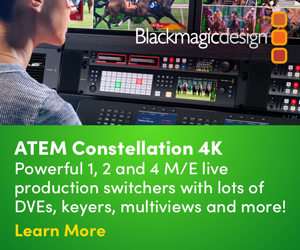M&E organizations adopt nuanced approach to storage solutions

Subscribe to NewscastStudio for the latest news, project case studies and product announcements in broadcast technology, creative design and engineering delivered to your inbox.
The media and entertainment industry’s approach to content storage is transforming, with organizations developing increasingly sophisticated strategies for managing their expanding content libraries.
Recent industry data reveals that 60% of media organizations now employ hybrid storage solutions, shifting from the “all-cloud” or “all-on-premises” approaches that dominated earlier industry discussions. This evolution reflects a deeper understanding of how different storage approaches serve varying workflow needs.
The state of cloud adoption
According to the “2024 Media & Entertainment Cloud Storage Index” from Wasabi, 42% of M&E organizations still consider themselves “traditional” in their approach to cloud services – significantly higher than the 18% average across other industries.
However, the industry shows clear signs of transformation, with 97% of M&E organizations planning to increase their cloud storage capacity in 2024.
This careful approach to cloud adoption reflects the industry’s unique relationship with digital assets. Unlike other sectors, M&E’s primary product exists as digital files, making storage strategy a mission-critical decision rather than simply an IT infrastructure choice. For broadcasters and production companies, the ability to quickly access and move content across different storage tiers can directly impact revenue generation and operational efficiency.
Beyond binary choices
The COVID-19 pandemic initially accelerated cloud adoption as organizations rushed to enable remote work capabilities. However, this period of rapid transformation has given way to more measured approaches as organizations better understand the strengths and limitations of different storage options.
Organizations are now making storage decisions based on specific content types and workflow requirements rather than adopting blanket policies.
High-performance workflows, such as live sports production and news gathering, often benefit from on-premises storage and MAM solutions that provide predictable performance and immediate access. Meanwhile, content distribution and long-term preservation may leverage cloud storage for its global accessibility and scalability.
Cost considerations evolve
The financial equation for storage has become more complex than simple comparisons of capital expenses versus operating expenses.
The “Cloud Storage Index” noted that M&E organizations spend 51% of their cloud storage budgets on data usage, access fees and egress charges – higher than the cross-industry average of 47%.
This cost structure pushes organizations to be more strategic about content placement and storage choices.
Perhaps most tellingly, 79% of M&E organizations exceeded their budgeted cloud storage spend in 2023, highlighting the challenges of managing costs in hybrid environments. This has led to an increased focus on predictable pricing models and a better understanding of workflow patterns that impact storage costs.
Strategic priorities in the media and entertainment industry
When selecting storage solutions, M&E organizations are prioritizing:
- Integration with existing workflows and third-party applications (such as through APIs)
- Native data protection and security capabilities
- Global reach and accessibility
- Adjacent cloud service availability
The emphasis on integration and security reflects the industry’s need to maintain efficient workflows while protecting valuable content assets. The rise of remote production and distributed teams has made seamless access to content across different storage locations increasingly important.
As artificial intelligence and machine learning become more central to media workflows, storage strategies will likely continue to evolve, with more processes working through the cloud.
The “Cloud Storage Index” indicated that nearly 100% of M&E organizations plan to deploy some time AI/ML applications in the future, adding new complexities to storage decisions. These technologies – such as metadata extraction or content enrichment – require rapid access to extensive content libraries, potentially influencing content placement and storage architecture decisions.
The question is no longer which approach is superior but rather how different storage solutions can be combined to serve the organization’s specific needs best while maintaining cost efficiency and operational effectiveness.
Subscribe to NewscastStudio for the latest news, project case studies and product announcements in broadcast technology, creative design and engineering delivered to your inbox.







tags
Cloud Storage, media storage, storage, Wasabi, Wasabi Technologies
categories
Content Delivery and Storage, Heroes, Media Asset Management